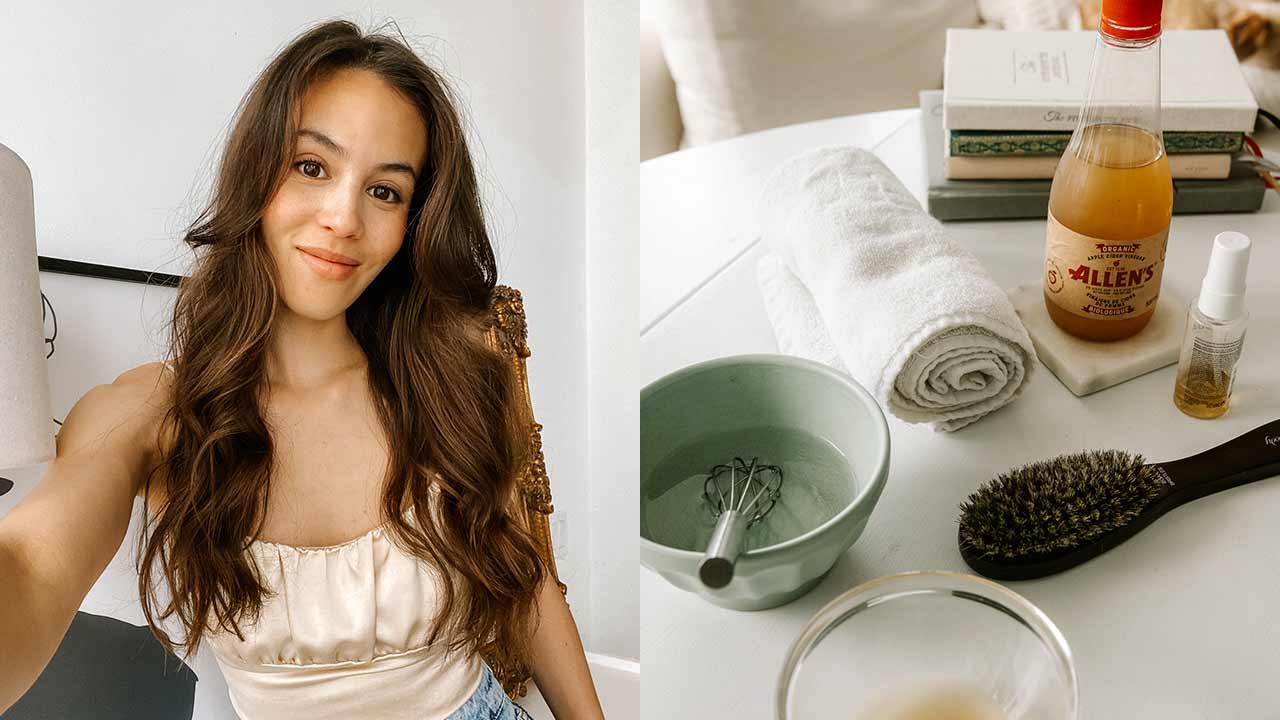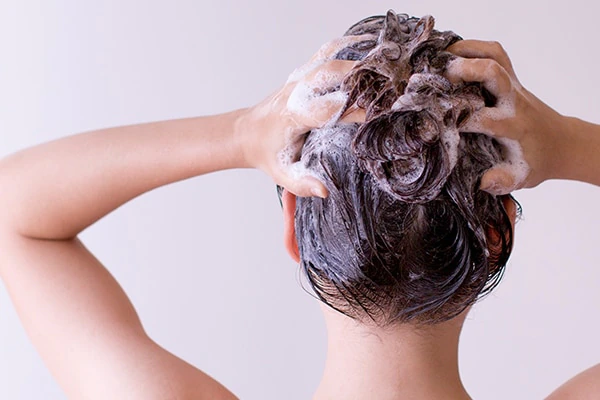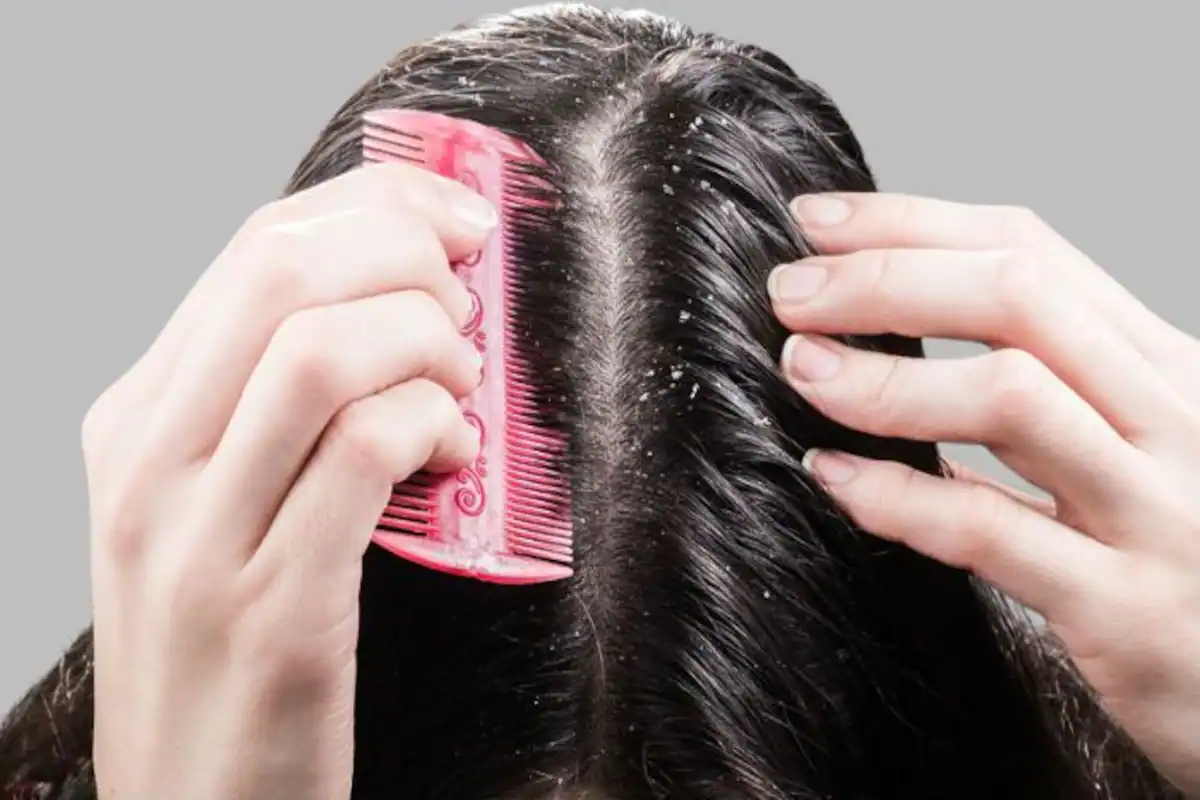It might be difficult to tell what works and what doesn’t when washing color-treated hair because there are so many treatments, hacks, and tactics available. The good news is that there are a few tried-and-true ways you may use to restore your luscious locks’ appearance and texture. It can be quite an ordeal trying to remove buildup without affecting hair color, but we’ll walk you through the more accessible options before moving on to the more complex options. Because accumulation can strip color on its own, it’s essential to take care of this. Everything you’ll need to get that buildup out of your hair is right here!
Using Apple Cider Vinegar wash for a more natural approach.
From battling blackheads to purifying your diet, apple cider vinegar has been a formidable player in both the skincare and wellness space for a long time. And, as if that weren’t enough, ACV is now establishing a name for itself in hair care, which should come as no surprise given its adaptability, availability, and ability to make a great DIY hair rinse. We spoke with hairstylists Gretchen Friese, Denis de Souza, and Jo Blackwell-Preston to learn more about this hot component.
What Is Apple Cider Vinegar?
According to Friese, “apple cider vinegar is created by crushing apples and then squeezing out the liquid.” Bacteria and yeast are added to the liquid to begin the alcoholic fermentation process, transforming the juice’s sugars into alcohol. The alcohol is converted into vinegar in a second and final fermentation process.”
You don’t have to use it, but if you do, you’ll probably never go back. That’s because ACV has a slew of possible advantages, all of which have one thing in common: improving the appearance and feel of your hair and scalp. Here’s how to do it:
ACV may provide therapeutic qualities for the scalp, promoting a healthy scalp. According to Friese, “the antibacterial and antifungal characteristics of ACV help to maintain the pH level of the scalp regulated.” “Dandruff is a buildup of yeast on the scalp that occurs when there is too much yeast on greasy parts of the skin. Using a mixture including ACV can help prevent this build-up.”
Reduces color fading: According to Friese, ACV can help tighten the cuticles in color-treated hair, preserving the brilliance of the color.
If your hair is susceptible to knots or tangles, anecdotal evidence shows that ACV with a wide-tooth comb can help you get rid of them.
Strengthens and softens: According to de Souza, “apple cider vinegar covers the cuticle, leaving the hair smooth and lustrous.” It also helps to enhance your hair” by shutting the cuticles and the hair shaft,” he adds.
ACV can help to smooth the hair and keep frizz at bay, according to Friese, making it a standard treatment option for those with curly and textured hair.
Reduces hair loss: According to Friese, ACV can help minimize hair loss by balancing the skin’s pH and clearing the hair follicle of debris.
Cleanses: Apple cider vinegar rinses can help remove product buildup from the scalp without removing color.
Hair Type Considerations
Apple cider vinegar is suitable for all hair types, including color-treated tresses, according to our experts. It’s beneficial for those who have a lot of product buildup on their hair, whether from hairsprays, dry shampoo, braids, or grease. People with oily hair types can get away with a higher ACV percentage, we suggest using higher water to ACV ratio if you have dry hair to avoid drying out your scalp.
How to Use Apple Cider Vinegar for Hair
Because ACV is weakly acidic, it may increase the life of hair color when mixed with two to three parts waters, but only when used shortly after the dye has been rinsed out. “Most hair colors are alkaline, which opens the hair cuticle,” Friese notes, “and using an acidic solution may reseal the cuticle.” You can play around with different dilutions to see what works best for you and your hair type, but the instructions below are an excellent place to start:
Mix water and vinegar in a ratio of one to five and use a spray bottle.
Spray your scalp well so that it is uniformly coated.
With your fingertips, work the vinegar into clean hair. It will be diluted to the point where it will not burn.
Allow two to five minutes for the vinegar mixture to rest. we recommend you use cold water to rinse your hair and scalp then use a light conditioner so as not to weigh down your hair root.
Rinse your hair thoroughly until all of the product (and vinegar) has gone down the drain.
Other solutions for removing buildup from color-treated hair
If you have exhausted the above milder options and nothing seems to work, perhaps it is time to take on a more radical approach—a bit more grit, of course, but nothing that will cause harm to your hair.
Wash with clarifying shampoo to cleanse buildup.
In the vast majority of cases, this will be sufficient to remove any buildup. Invest in a clarifying shampoo made specifically for color-treated hair. Follow the directions on the label to wash your hair. After you’ve washed out the clarifying shampoo, continue to condition your hair as usual.
This is by far the best technique to deal with it, regardless of what’s creating the buildup. However, regular clarifying shampoo can strip color, so make sure you choose a color-safe one!
You should be ready to do it once a week as long as the influence on the color is modest. However, don’t use clarifying shampoo more than once a week.
Rinse with club soda to remove buildup from tap water.
Minerals in tap water might cause buildup, so make sure to rinse them away. The minerals from the faucet are left behind in your hair every time you wash it with tap water (chlorine and magnesium are the big culprits here). Bend over a sink and run club soda into your hair to rinse out those minerals after showers and shampoos.
Baking soda will remove the buildup, but it will also remove some color. Baking soda is a powerful cleanser, so it’s ideal if you’re having trouble eliminating buildup. However, this may strip part of the color from your hair due to its potency, so use caution. To make a thick liquid, use 1 part baking soda with two parts water. Work the baking soda into your hair, leaving it in for 10-20 minutes before rinsing it off.
You can also comb out your hair after adding pure baking soda to it after it’s dry. This may be your best option if the accumulation is caused by oil.
Bottom line: Stick with color-safe products.
From shampoo to style gel, make sure the color is mentioned on the packaging of everything. There are color-safe versions of almost every product on the market, so if you want to keep your color, stick to brands and products that are expressly developed to protect color-treated hair. If you’re unsure which products are best for your hair structure and color, ask your stylist for recommendations.
This is especially crucial for shampoo and conditioner, as these are the two products you’re likely to use the most.



